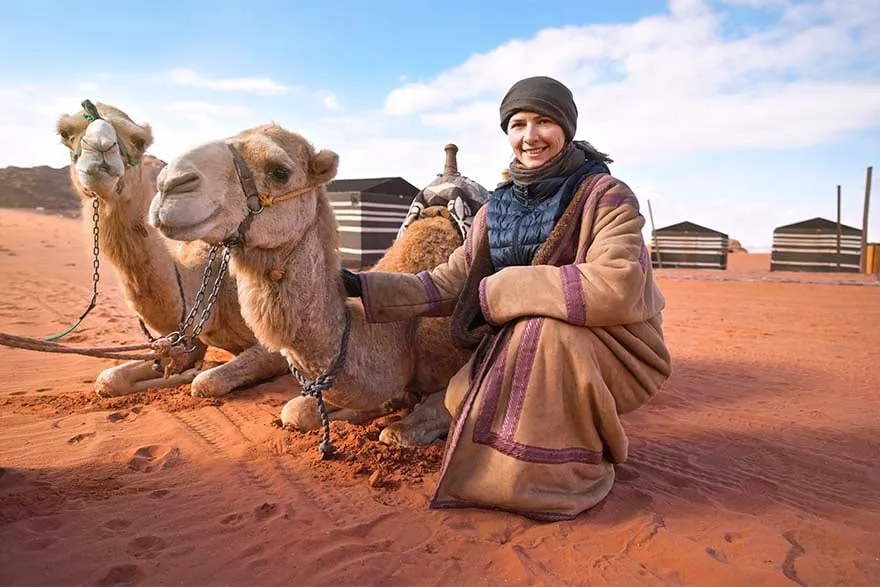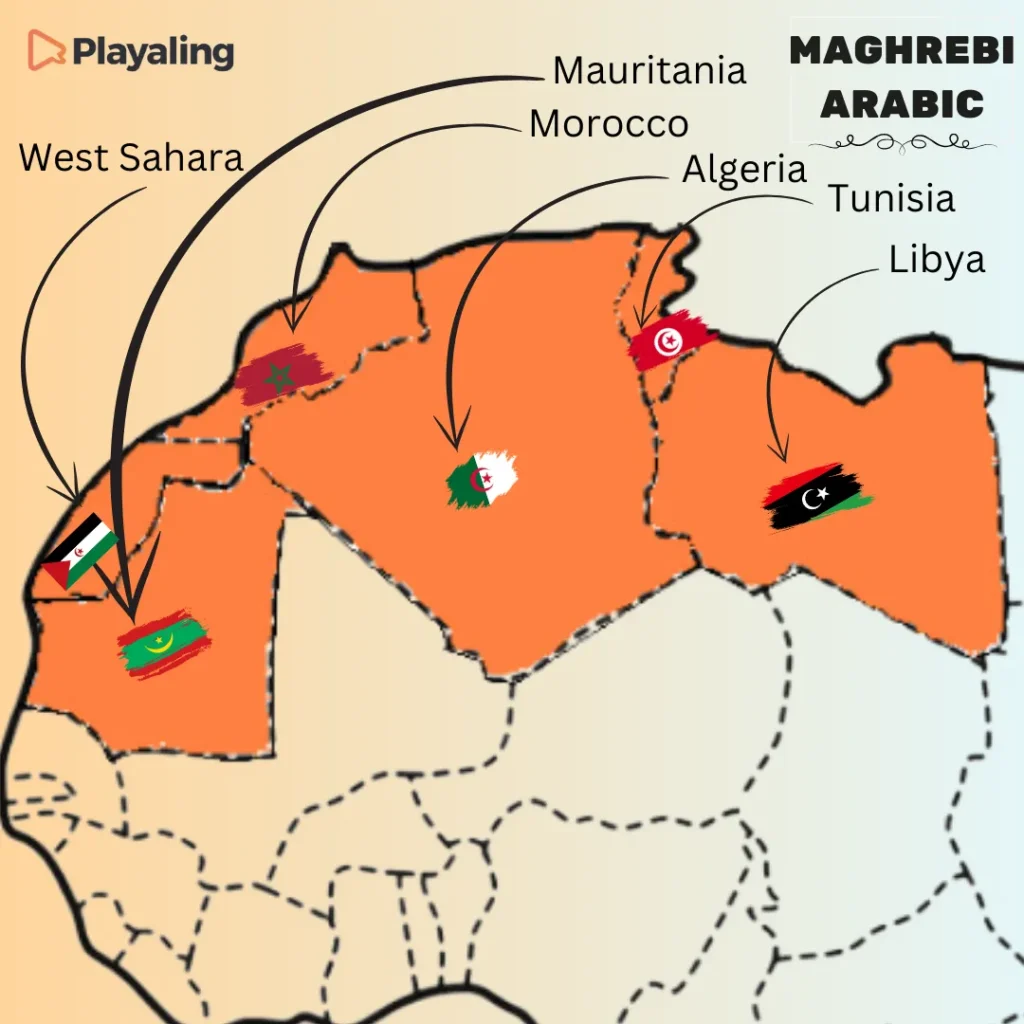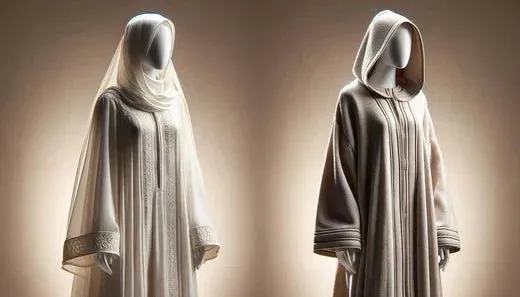Estimated reading time: 12 minutes
Key takeaways
- Learn about the cultural differences between the Gulf and the Maghreb in the Arab world.
- Analyze the differences in language, religion, cuisine, and lifestyle between the two regions.
- Provide practical information and useful tips for successful travel and business in Arab countries.
Table of Contents
- Cultural Frame of Reference: What are the Gulf and Maghreb regions?
- Historical Context: How History Shaped the Regional Identities of the Gulf and Maghreb
- Language & Communication in Arabic: Key Differences
- Islamic Beliefs and Religious Practices
- Attire, Aesthetics & Scents: Abaya vs. Djellaba
- Cuisine and Hospitality: Kabsa or Couscous?
- Quick Comparison: Gulf vs. Maghreb
- Practical Guide for Your Trip
Cultural Frame of Reference: What are the Gulf and Maghreb regions?
When thinking of the Arab world, many people often imagine a monolithic culture. But the reality is much richer and more colorful, and exploring the cultural differences within the Arab world will open up a completely new and fascinating perspective. These differences are not just minor details but a picture of deep contrast between two main geographical-cultural regions: the Gulf and the Maghreb.
To understand better, let’s provide a brief definition:
- Gulf Region: Includes the Arab countries along the Persian Gulf such as Saudi Arabia, UAE, Qatar, Kuwait, Bahrain, and Oman.
- Maghreb: This is the western strip of the Arab world, comprising Morocco, Algeria, Tunisia, Libya, and Mauritania, which has a very unique indigenous Amazigh (Berber) cultural layer.
In this article, we will explore the panoramic picture of Arab culture, comparing details from language, religion, and cuisine to communication styles. Based on reliable sources, Nuhaira will share practical examples and useful tips so you can be more confident when traveling or doing business, avoiding unnecessary cultural misunderstandings.
Historical Context: How History Shaped the Regional Identities of the Gulf and Maghreb
History is the underlying current that has shaped the distinct cultural differences of today.
In the Gulf region, the cultural foundation is built on the traditions of nomadic Bedouin tribes of the desert, with core values of hospitality and honor. Alongside this, maritime trade routes connecting to the Indian Ocean and the birth of Islam created solid social norms. The “oil era” in the 20th century brought a revolution, promoting urbanization and opening up to globalization. A huge influx of migrants from South and Southeast Asia has transformed the region into a vibrant multicultural society.

Meanwhile, the history of the Maghreb is a story of intersection and fusion. Built on an indigenous Amazigh cultural foundation, the Arabization process from the 7th century was robust. This land was also influenced by the Ottoman Empire from the east and especially by the colonial periods of France and Spain, which left a deep mark on its legal systems, architecture, and language. Independence movements in the 20th century forged a strong sense of national pride. Unlike the Gulf, migration from the Maghreb has primarily flowed towards Europe, creating an important cultural and economic bridge through remittances.
Language & Communication in Arabic: Key Differences
This is perhaps one of the most surprising differences. Although both speak Arabic, people from the Gulf and the Maghreb can have great difficulty communicating with each other.
- Khaleeji Arabic: This is the dialect group used in the Gulf region. It has its own pronunciation and some unique vocabulary but is generally quite close to Standard Arabic.
- Darija (Maghrebi Arabic): This is the dialect of North Africa, a unique blend of Arabic, the Amazigh language, French, and Spanish. Due to significant differences in vocabulary and phonetics, Darija is almost incomprehensible to Arabic speakers from other regions who have not been exposed to it.
Regarding foreign languages, English is the common second language in business and daily life in the Gulf. Conversely, French is dominant in the Maghreb (especially Morocco, Algeria, Tunisia), while Spanish is common in northern Morocco.
In communication, although both value formalities like formal greetings or using the word “Inshallah” (if God wills), there are subtle differences. The “majlis” culture (a dedicated space for receiving guests and discussion) is characteristic of the Gulf, reflecting hospitality and the value placed on relationships.

Islamic Beliefs and Religious Practices
Both regions have a Muslim-majority population, but the schools of thought and practices have their own distinct features.
- Gulf Region: The majority of the population follows the Sunni branch. In particular, Saudi Arabia follows the very conservative Hanbali school (often known as Wahhabism). Meanwhile, Oman has a large community following the Ibadi branch, an independent branch of Islam known for its moderation and emphasis on community.
- Maghreb: The population mainly follows the Sunni branch with the Maliki school of thought, which is more open to integrating local customs. The Sufi tradition (Islamic mysticism) is very strong here, manifested through orders (tariqa) and spiritual festivals like zikr. Mawlid (the celebration of the Prophet Muhammad’s birthday) is often celebrated more grandly and with more Sufi color in the Maghreb.
Attire, Aesthetics & Scents: Abaya vs. Djellaba
Style of dress and aesthetics are a clear reflection of the cultural identity of each region.
- Gulf Region: Traditional clothing is still commonly worn daily. Men wear the kandura or thobe (a long white robe) with a ghutra headscarf held in place by an agal cord. Women often wear the abaya (a black cloak) and sometimes the niqab (a face veil). The region is also famous for its rich scent culture of oud (agarwood) and bukhoor (incense).
- Maghreb: Clothing is more diverse and has a more Mediterranean feel. The djellaba (a hooded robe) and the caftan are common garments. The aesthetic here is a blend of Andalusian, Arab, and Amazigh styles. Preferred scents are often lighter, with amber, musk, and orange blossom oil.

Abaya and Djellaba
Cuisine and Hospitality: Kabsa or Couscous?
Cuisine is the unspoken language of culture. The dining tables in the Gulf and the Maghreb tell two completely different stories.
- Gulf Region: Meals revolve around rice and meat, with famous dishes like kabsa or machboos, richly seasoned with cardamom, saffron, and cinnamon. The ritual of offering Arabic coffee (qahwa) with dates is a symbol of hospitality.
- Maghreb: Couscous is the national dish. Tagine stews cooked in earthenware pots, harira soup, and harissa chili paste are also extremely popular. Instead of coffee, sweet mint tea is the most beloved beverage. Strolling through the old markets (medinas) and enjoying street food is an unmissable experience.
Quick Comparison: Gulf vs. Maghreb
For an easy overview, Nuhaira has summarized the main differences in the table below:
| Field | Gulf Region | Maghreb |
|---|---|---|
| Language | Khaleeji Arabic, English | Darija, French/Spanish, Amazigh |
| Religion | Sunni (Hanbali), Ibadi | Sunni (Maliki), Sufi |
| Cuisine | Kabsa, machboos, Arabic coffee | Couscous, tagine, mint tea |
| Attire | Thobe/abaya, ghutra | Djellaba, caftan |
| Spaces | Megacities, majlis | Medina, riad, old souks |
| Business | Formal, values “wasta” | Flexible, meetings in cafes |
Despite the differences, both regions share valuable Arab similarities such as the high value placed on family, warm hospitality, respect for hierarchy, and personal honor.
Practical Guide for Your Trip
To make your trip to the Arab world more complete, keep these Arab travel tips in mind:
- Attire: Always dress modestly, especially when visiting religious sites. In the Gulf, women should avoid showing their shoulders and knees. It can be more flexible in tourist areas in the Maghreb, but respect for local culture is always appreciated.
- Behavior: Ask for permission before taking pictures of people. Limit public displays of affection, especially in the Gulf. During the month of Ramadan, absolutely do not eat, drink, or smoke in public during the day.
- Business: Prepare bilingual business cards (Arabic-English for the Gulf; Arabic/French-English for the Maghreb). Appointments can be flexible with time, and building a personal relationship before discussing business is very important.
Conclusion
The journey to explore the cultural differences within the Arab world between the Gulf and the Maghreb reveals an important truth: this is not a monolithic world, but a tapestry woven from countless threads of history, geography, and people. Understanding this diversity not only helps us avoid stereotypes but also opens the door to effective communication, appreciation, and full enjoyment of valuable experiences when traveling and doing business in this dynamic region.
Have you had any experiences in the Gulf or the Maghreb? Share your story in the comments section below
See more:

